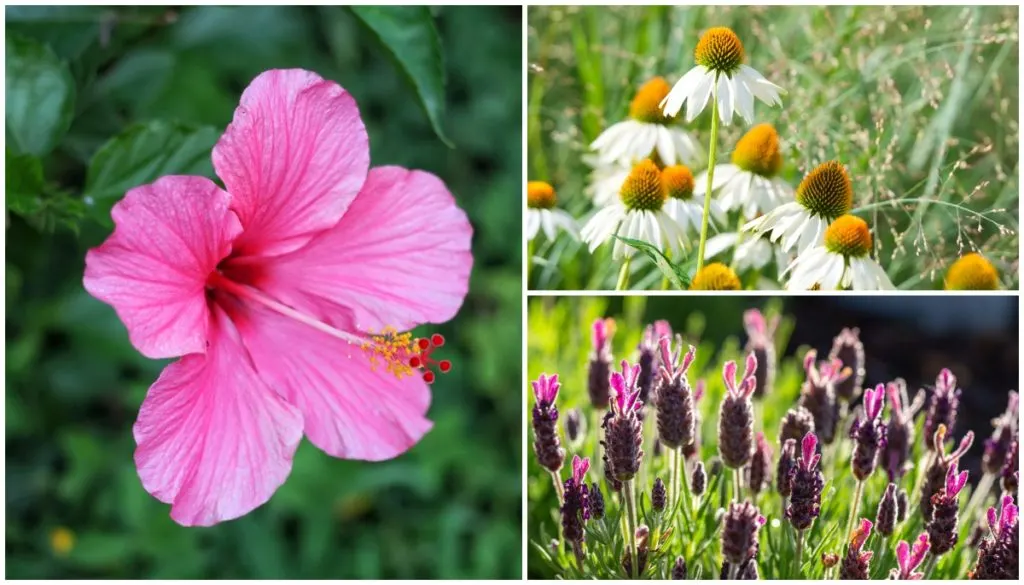
Where kitchens are the heart of the home, gardens are the soul. Everyone love’s a bright, colorful garden that provides an essence of spring as long as possible, leading to the question I am asked most often – which plants flower all year round?
The unfortunate answer is, none of them.
Flowers are just one part of plant growth and go through cycles like everything else. But, there are a few plants that flower almost all year, or for more than one season at least, to give you that spring feeling for as long as possible.
These plants produce color spring-to-fall (and occasionally longer). Plus, most are easy to care for and some even have a few extra uses.
1. Penstemons
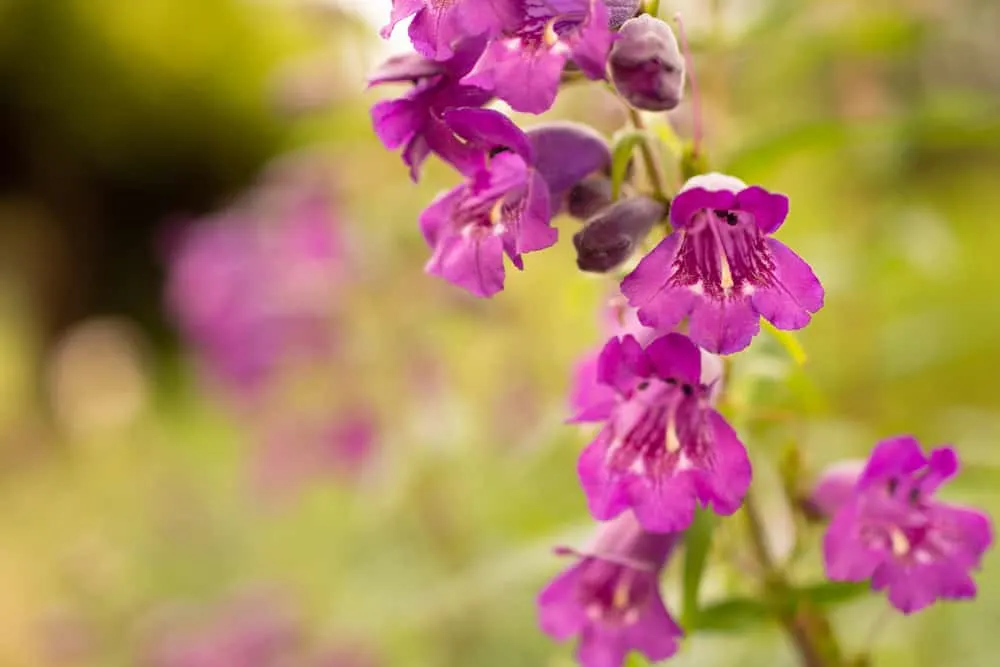
Penstemons add a unique touch to gardens with their tube-like flowers. They’re commonly known as beardtongue. Some varieties are extremely popular, sporting colors ranging from pastel pinks to bright reds and oranges.
Penstemons flower from summer to late fall, keeping your garden a true colorful picture for most of the year. They thrive in USDA zones 3-8 and can tolerate drought-like conditions.
There are several varieties to choose from, each sporting slightly different characteristics and bright summery colors. The ‘Elfin Pink’ has sweet pink flowers and only grows to about 12 inches. It’s a perfect addition to your rock garden alongside sage and coneflowers.
2. Hibiscus
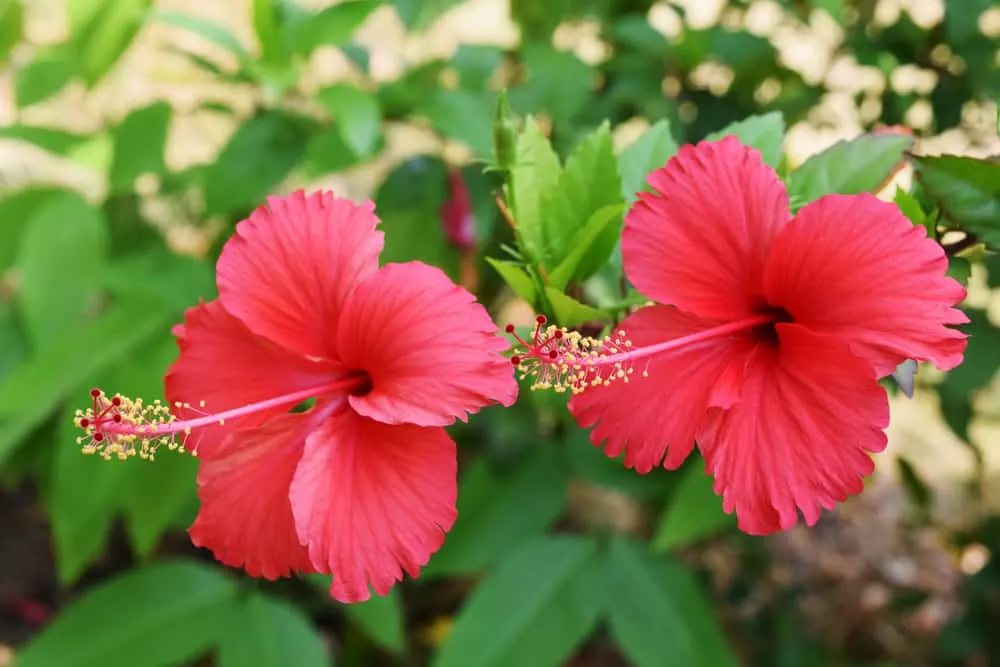
Hibiscus is one of the few flowering plants that can truly bloom all year, given the right conditions. Typically, their stunning tropical-like flowers bloom from summer to fall. But, in tropical climates or indoors, they stick around no matter the season.
Most hibiscus plants have some spread, growing to about 2-8ft wide and forming an impressively large flowering shrub or small tree. Unfortunately, some varieties, particularly Rose of Sharon are classified as invasive species in some regions.
Hibiscus adds splashes of color to your garden unlike any other plant, coming in the widest variety of shades from bright oranges and reds to soft blush and blues.
The several varieties offer unique color variations and flower types. Rose of Sharon (Hibiscus syriacus) is typically more muted in tone, with pretty pastel colors that blend into one another for a delicate feature. Chinese Hibiscus (Hibiscus rosa-sinensis) features tropical tones reminiscent of summer sunsets, with bright oranges, reds and yellow – or a mix of them all.
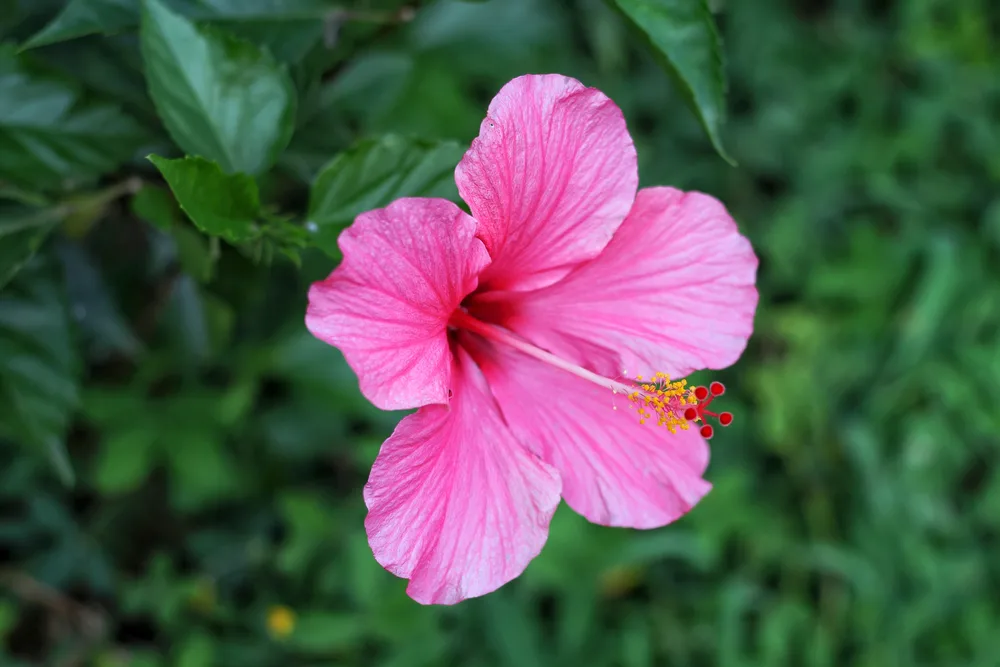
If you want your hibiscus to flower all year – even if you don’t live in the tropics – you could always bring it inside. Grow your hibiscus in large, moveable pots and bring it inside for winter protection. Keep the temperature at a consistent 55F and make sure it gets as much sunlight as possible.
3. Phlox
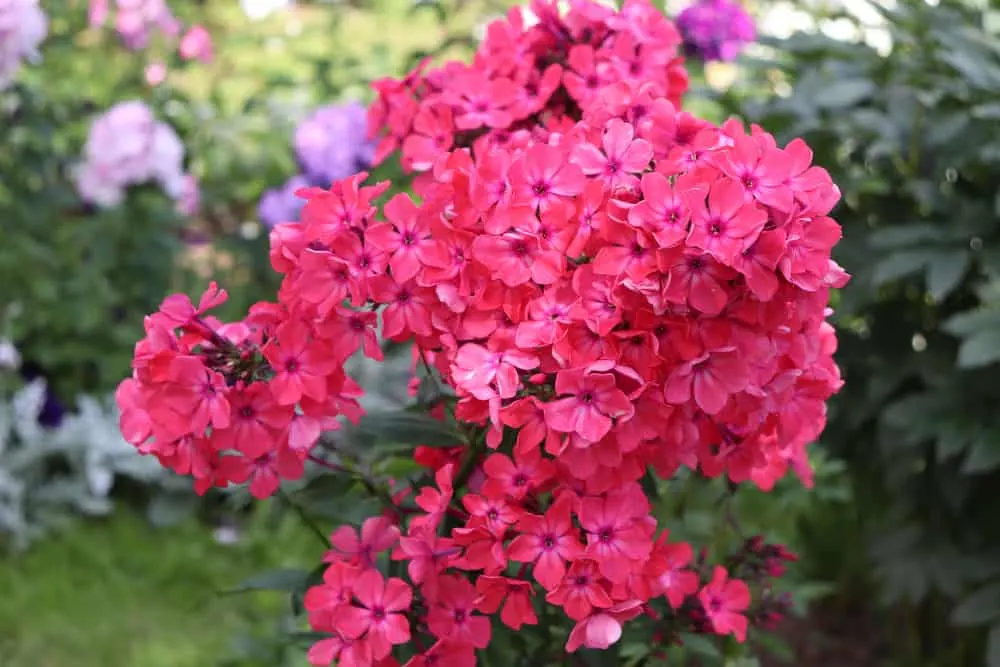
A perfect choice for your classic cottage garden is phlox. This light-loving plant blooms from summer and well into fall, sporting bright variations of reds, pinks, and purples, with some showing off gleaming white flowers.
Phlox thrives in temperate locations with milder summers (USDA zones 4-8) and appreciates plenty of airflow.
One of the greatest things about phlox is its wide variety. Whether you want a low-growing, creeping plant or tall bushes with strong stems perfect for a vase of cut flowers, there is a phlox for you.
The Drummond Phlox is grown as an annual, along with Garden Phlox. You have two choices for ground covers or creepers, Phlox subulata, and Phlox stolonifera.
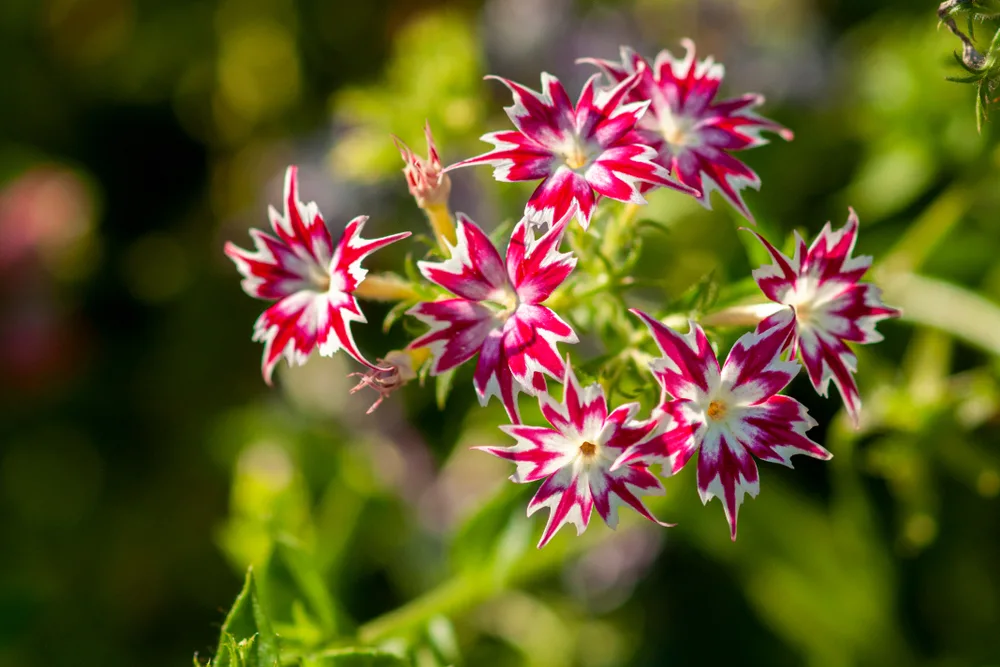
As stunning as phlox is, it can be prone to powdery mildew, a fungal disease. Powdery mildew can quickly spread to other parts of your garden if not controlled. Some phlox cultivars are relatively resistant to the disease, but if exposed to hot, humid conditions, the plants are still susceptible.
Give your phlox enough room to breathe with adequate airflow. Always prune and dispose of any older, damaged leaves and practice good garden hygiene.
4. Coneflower
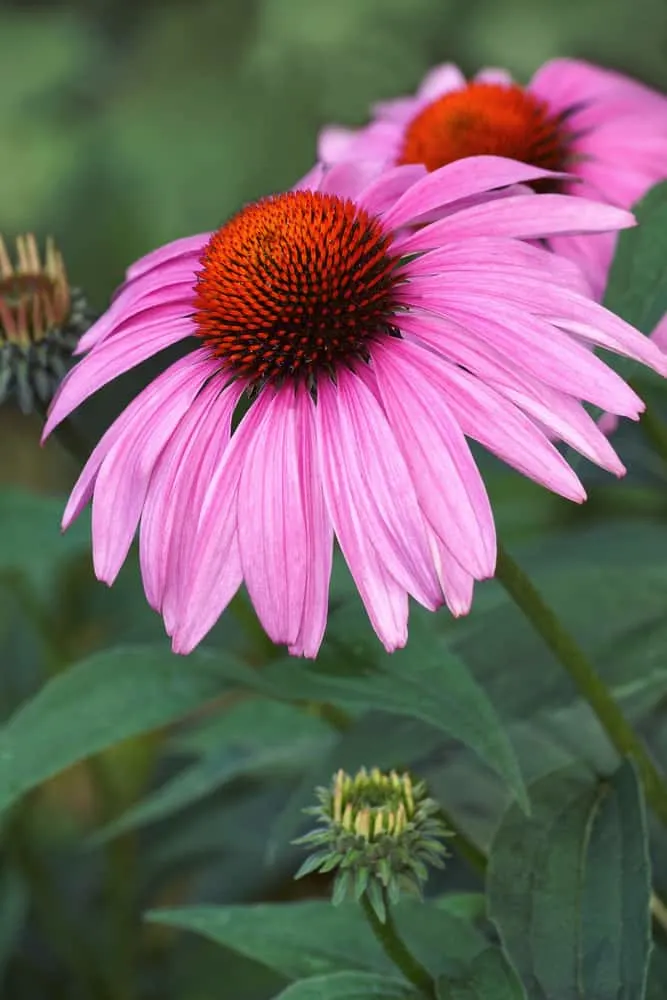
Coneflower is the common name for many of the varieties in the Echinacea genus. Most bloom from June through to October, depending on your region.
Coneflowers are incredibly beginner-friendly flowers, with their drought tolerance, self-seeding abilities, and wide range of growing conditions, suitable for USDA zones 3 to 9.
Traditional coneflowers (E. purpurea) have large, dusty-purple flowers with glowing orange centers. If you’re not a fan of purple, there are several cultivars that offer plenty of range to match any landscape.
For smaller, white blooms, opt for ‘Avalanche’, which is deer resistant and survives drought-like conditions. Plant it alongside your lavender or sage in your rock garden for splashes of white.
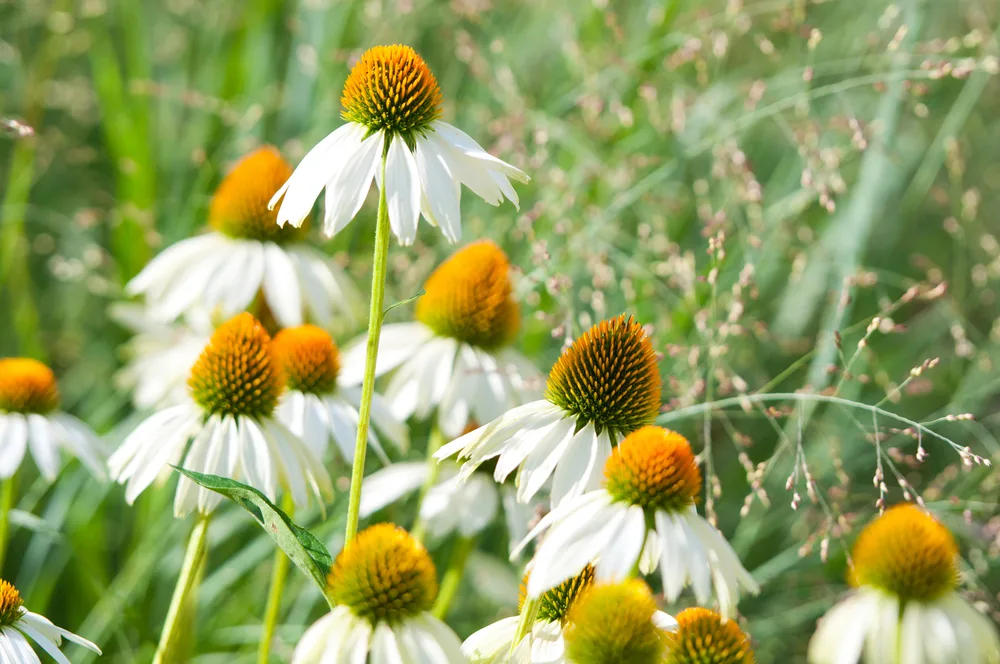
A truly interesting variety is ‘Cheyenne Spirit’. Its daisy-like petals droop around the large rusty center – a showstopper when grouped together along borders. Shades of yellow, red, purple, orange and creamy white create a true spectacle no matter where they are.
5. Ice Plant
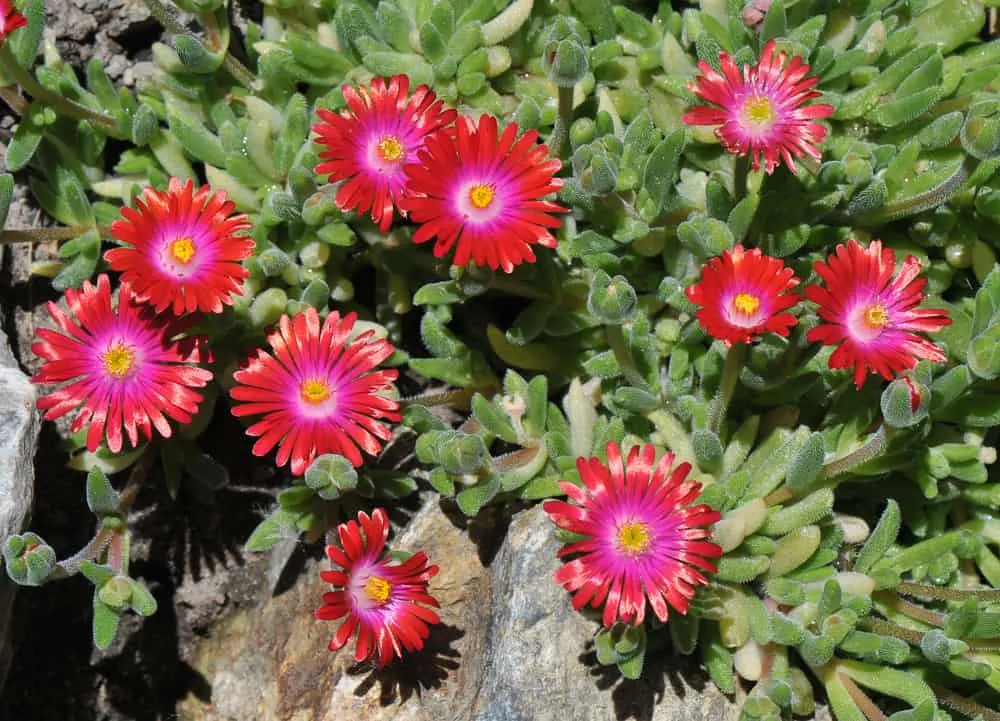
Ice plant is one of the best low-growing plants, favored for its long-lasting blooms. Its flowers add life and color to your garden from June through to September.
Useful as a ground cover or filler plant, its flowers sport a multitude of colors, from reds to purple, but they’re all deep and bright. The term pop of color is an understatement when it comes to ice plants.
Even better, these vivid plants have interesting, succulent-like leaves, which darken as winter draws nearer. While the flowers may drop when temperatures do, the plant remains evergreen – specifically in warmer regions.
Ice plants grow best in USDA zones 5 to 10 and once established are very drought tolerant. Plant them as ground cover in lavender beds to break up some of the soft purples with bright shows of color.
6. Lavender
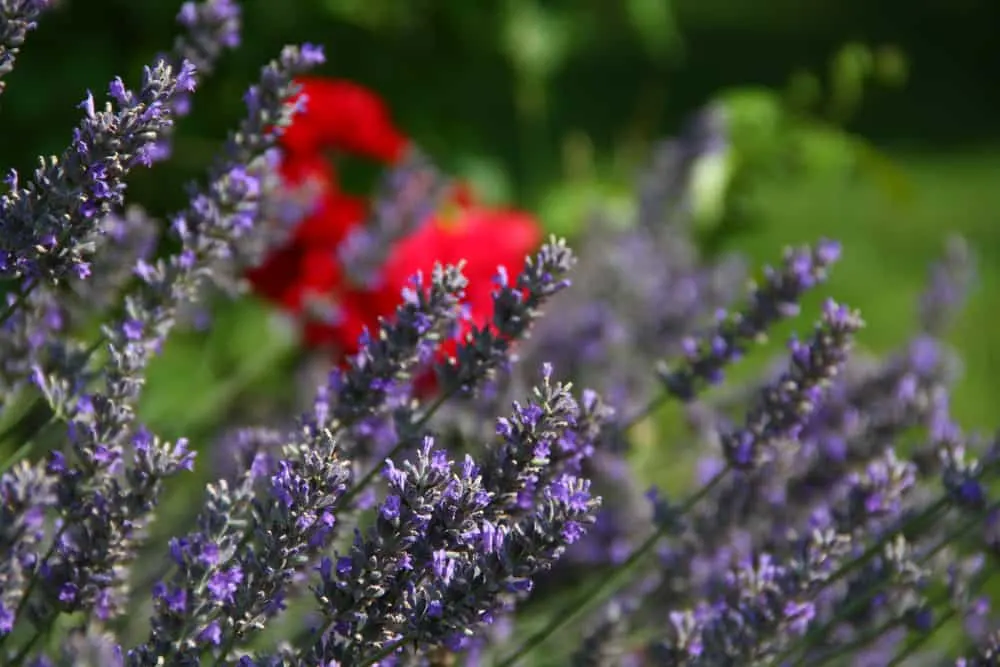
Lavender is not only appreciated for its beauty – the stunning scent is used in fragrances and oils, and the plant often features in experimental home kitchens. Although lavender is useful outside the garden, it certainly shines best in your flower beds.
Some lavender varieties only flower for one season, but others span across two or three seasons, such as Spanish Lavender (Lavandula stoechas). A few varieties can bloom continuously, even through winter, under the right conditions.
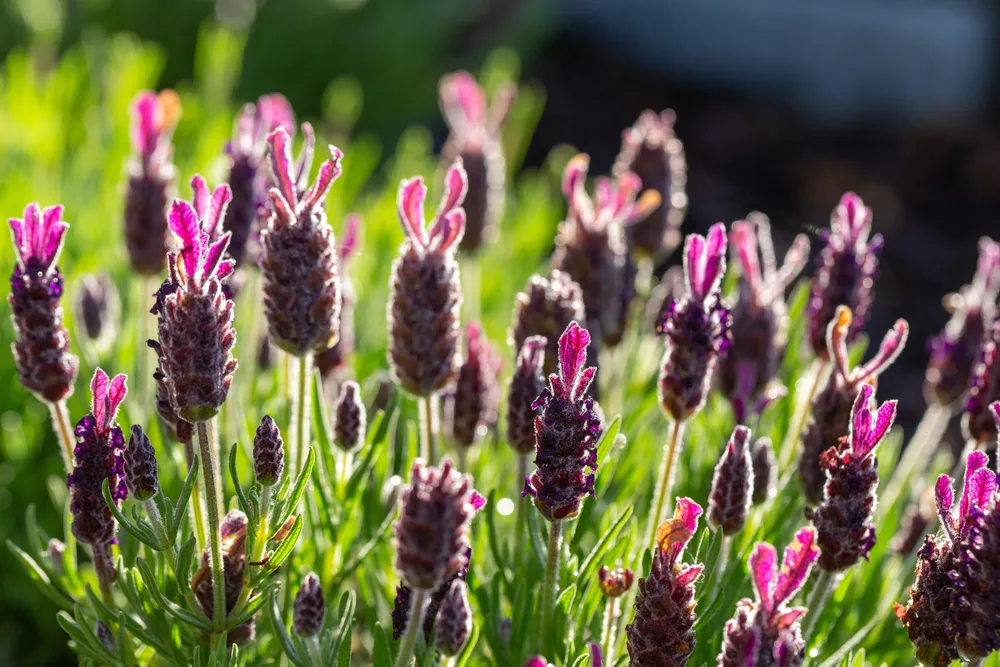
Its Mediterranean roots allow it to thrive in sandy, dry conditions. Because of this, lavender needs very little water – too much can cause root rot.
Lavender makes a wonderful companion plant, pairing well with sage and roses. Fill the gaps, of space and color, in rose beds with lavender for year-round color.
Related Reading: 12 Reasons To Plant A Lavender Hedge & How To Do It
7. Russian sage
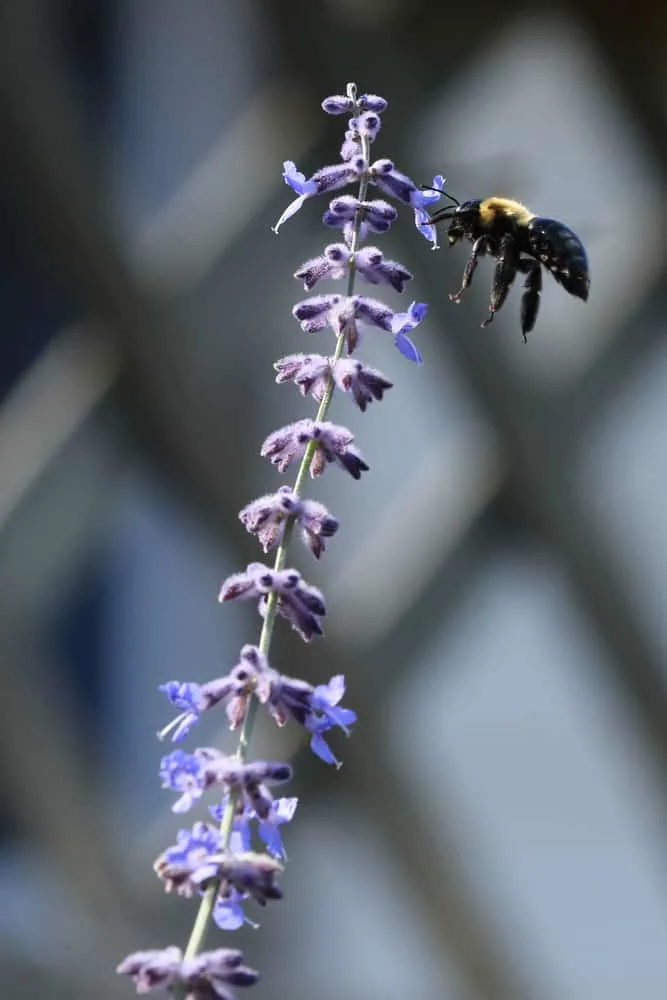
When searching for long-flowering plants, Russian sage truly ticks all the boxes. Its flowers are sweet and bountiful (sometimes being confused for lavender flowers), adding wispy purple to any garden space. It is very low maintenance and it blooms for months on end.
Russian sage thrives in USDA zones 4-9 and due to its Mediterranean heritage, survives in some of the worst garden conditions.
The pure abundance of the small lavender-like flowers softens your landscape, making them great for rock gardens or borders.
8. Stella d’Oro Daylily
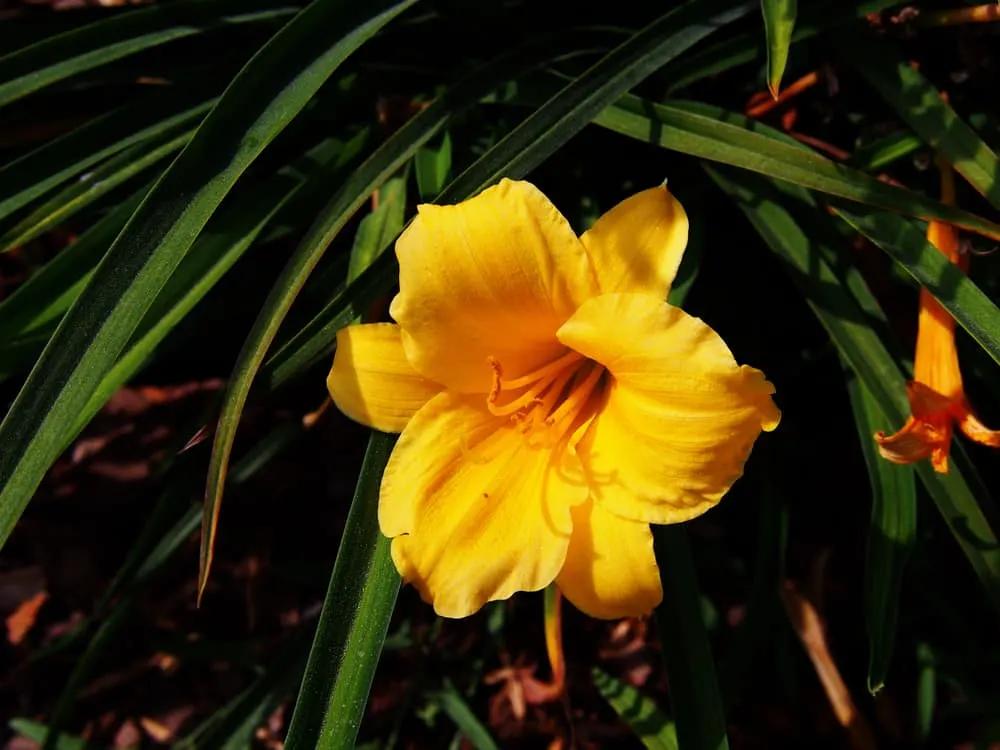
Daylilies are one of my favorite ornamental plants. And ‘Stella d’Oro’ Daylilies are the gold standard in terms of low maintenance and beauty. This cultivar has all the benefits and features of hybrid daylilies, sporting classic, golden flowers that bloom for several months of the year.
‘Stella d’Oro’s are quite small, growing to between 9 and 12 inches tall. They can also be propagated easily and truly need very little maintenance.
Due to its compact size and carefree nature, this daylily can be planted just about anywhere and for any landscaping purpose. They thrive in most conditions and survive in a wide range of zones, 3-10.
There are few other cultivars, derived from ‘Stella d’Oro’, sporting similar needs and characteristics but a range of colors.
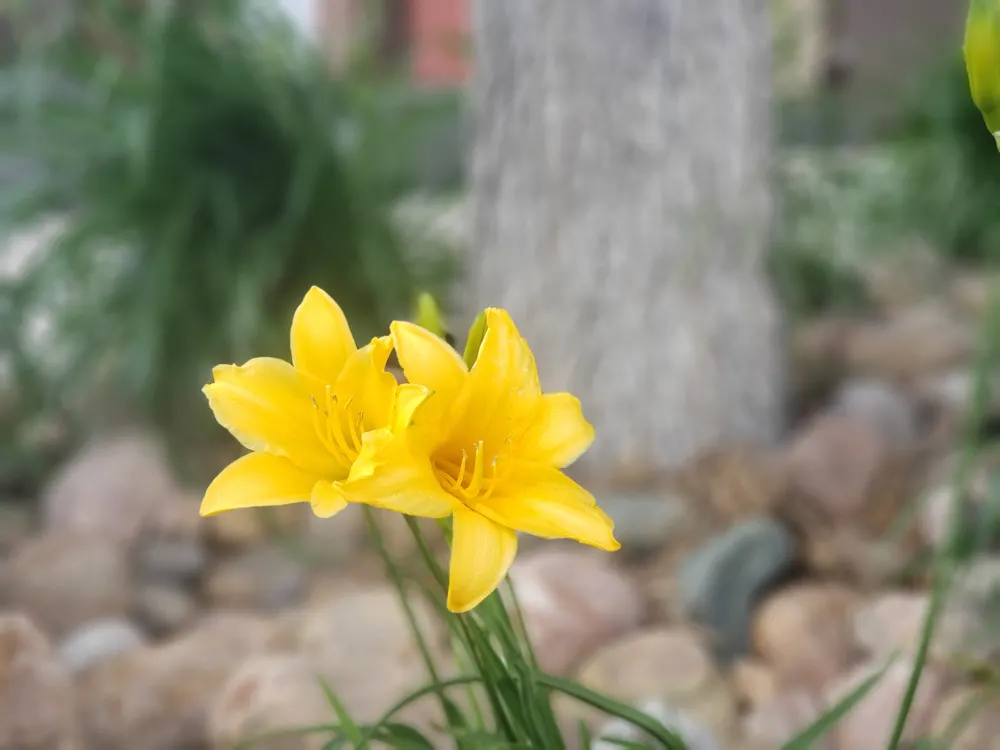
For muted, pastel yellows try ‘Happy Returns’, or if you’re a fan of pinks and reds, opt for ‘Rosy Returns’ or ‘Dragon’s Eye’. Purple lovers are covered too with ‘Indian Giver’ and ‘Purple d’Oro’.
9. Salvia
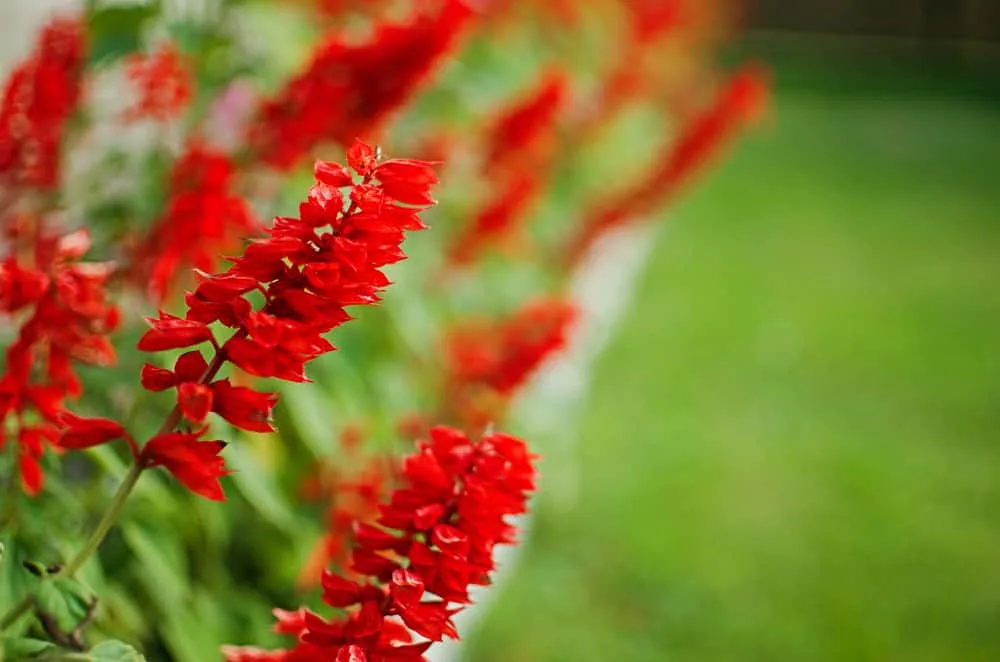
Salvia is a large genus of plants, with variety to suit every kind of gardener. Whether you’re looking for a specific color, flower shape, or even texture – salvia has you covered.
All varieties thrive within a USDA zone of 4-10 – the specific zones are dictated by the variety you choose. They’re one of the few plants that thrive in dry, sandy soils, needing very little water.
No matter which you choose, you’re sure to be treated with long-lasting, colorful blooms that attract bees and hummingbirds.
Some of the most popular varieties include Woodland Sage and Mealycup Sage.
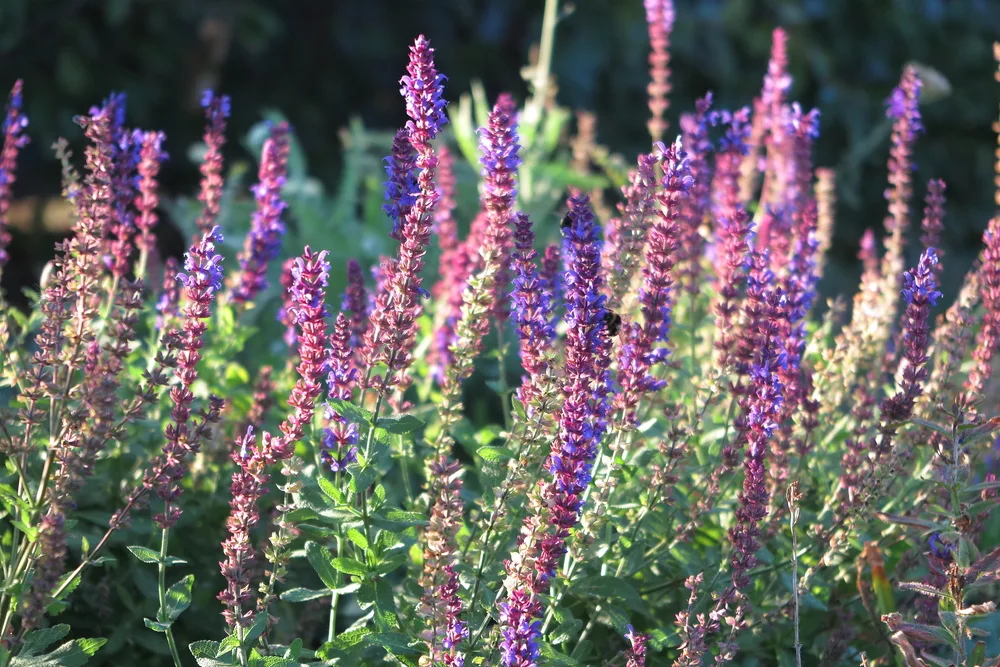
Depending on which you go for, your garden will be delighted with splashes of purples, blues, and soft violets.
10. Threadleaf Coreopsis
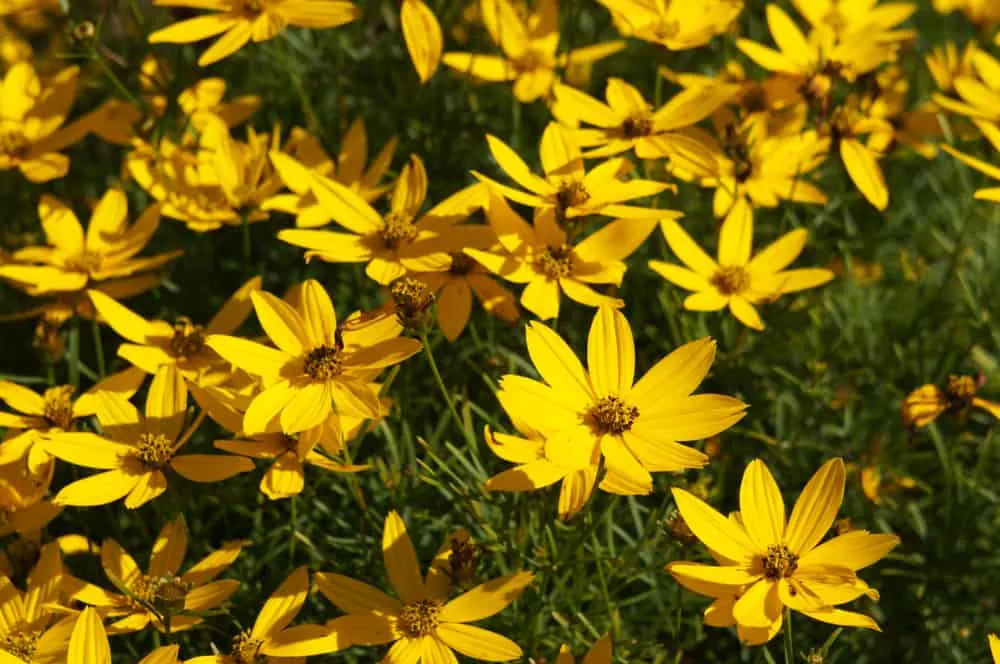
Another cottage-style flowering plant that blooms over several seasons is threadleaf coreopsis. You might know it as whorled tickseed or whorled coreopsis too.
These tiny, daisy-like flowers sit on 2 feet tall plants with delicate foliage. The plant as a whole softens spaces with ease, its light and bright flowers pairing well with almost anything. Threadleaf coreopsis thrives in USDA zones 3-9 and tolerates drought.
Depending on the variety, these small flowers could be yellow, red, pink, and even bicolored.
11. Yarrow
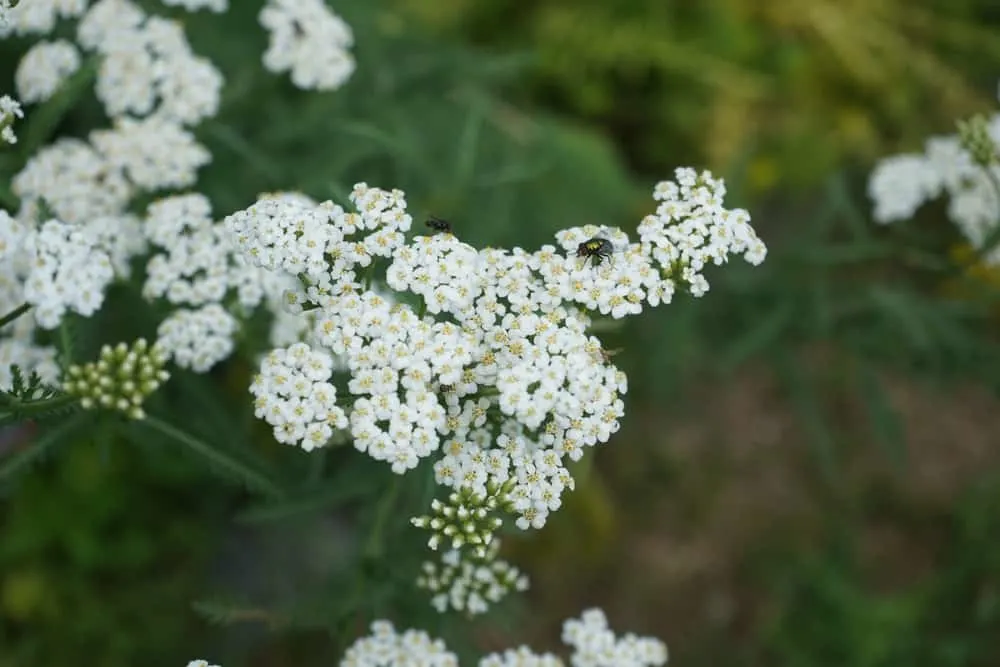
Another pretty herb with stunning long-lasting flowers to consider is yarrow. You’ll be treated to classically beautiful flowers from June and through to September.
Yarrow is loved today for its long-blooming flowers and low maintenance. Depending on the variety, your garden will have sweet splashes of reds, yellow, white, pinks, and even rusty brown.
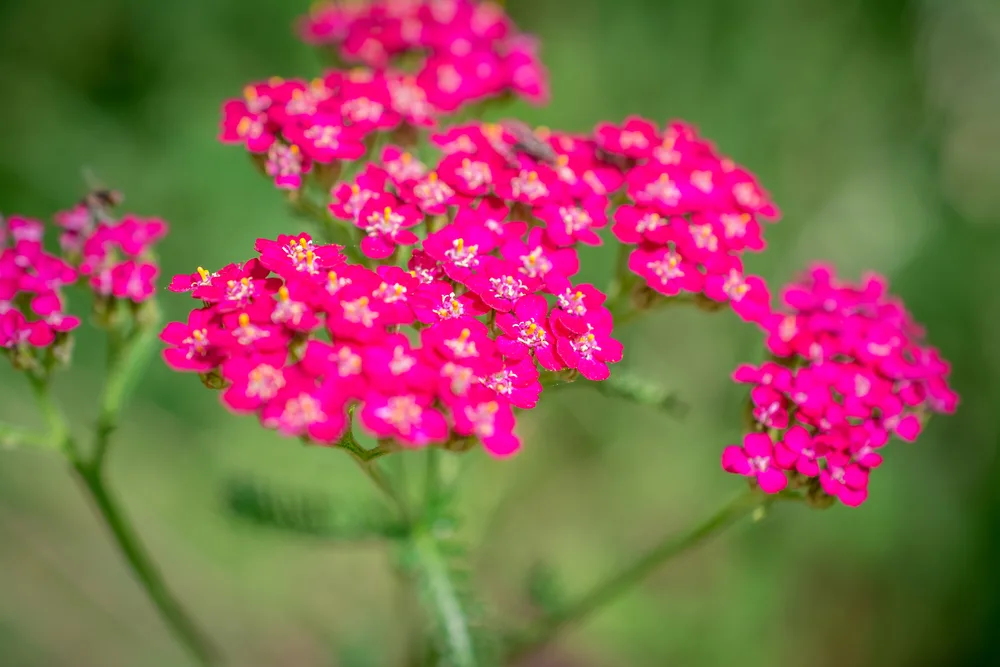
Yarrow, growing best in USDA zones 3-8, looks best in cottage-style gardens, but it’s a favorite in pollinator gardens too for its ability to attract a wide range of garden friends – especially butterflies.
It’s a great filler plant in the garden and is suitable for cut flower gardens too, making an excellent filler in bouquets.
12. Bougainvillea
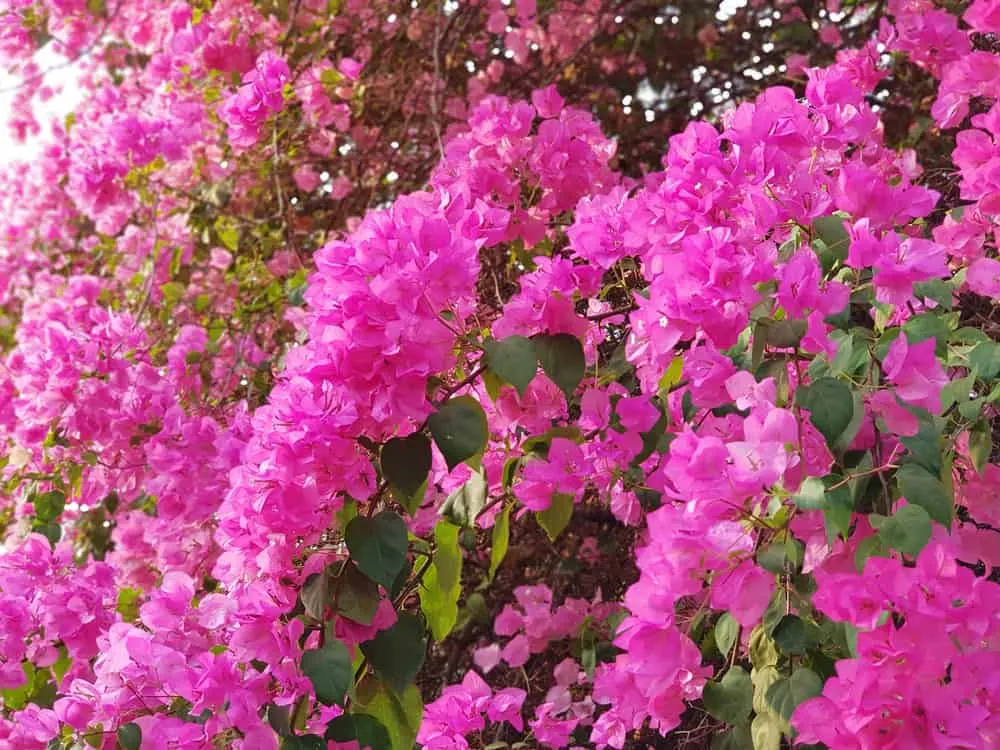
Bougainvilleas are a popular landscaping plant, with their stunning pink or white colors spreading beauty across garden walls. They can grow to a height of 15-40 feet and spread just as far.
Even though you’ll likely see bougainvilleas creeping proudly along walls, they can also act as a luscious flowering carpet if need be.
Bougainvilleas thrive in USDA zones 9-11 and in these warmer climates, their bright colors stick around all year. You’ll notice that these bright pink or white ‘flowers’ are actually specialized leaves called bracts. These surround and protect the tiny, tubular flower.
Depending on the variety, you could add a tapestry of purple, orange, red, and even yellow along your walls.
If you want to keep your landscape colorful and bright all summer long then these long blooming plants are for you.
The greatest part about many of these plants is that they’re beginner-friendly and super low-maintenance. Their unique flower shapes complement many other plants, but stand out if planted on their own.
